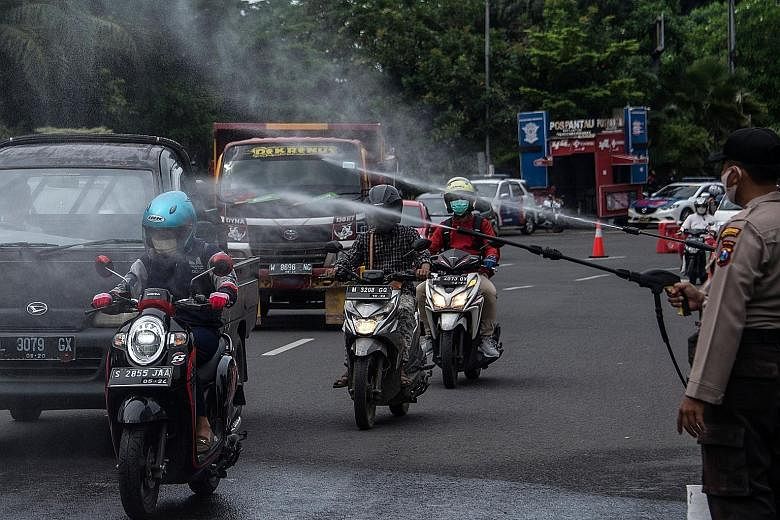The head of Indonesia's expert team on its Covid-19 task force has disputed the convention used by the World Health Organisation (WHO) to measure the fatality rate of the disease in the country.
Using the WHO convention, Indonesia's death to infected rate is 8.1 per cent, when it should be less than half using a different counting method, said Professor Wiku Adisasmito.
He told a virtual panel discussion with foreign journalists on Monday that the count should not just include confirmed cases, but also what Indonesia calls PDPs - which translates as patients under surveillance.
Indonesia has been in the world spotlight for having the highest fatality rate in Asia. The Philippines, which has a lower gross domestic product per capita than Indonesia, has recorded a 6.6 per cent fatality rate. The United States, with a similar population level as Indonesia, has recorded a 5.6 per cent fatality rate, while India's is 3.2 per cent.
Prof Wiku, who was responding to a question at the discussion, expressed frustration at foreign media reports on the death rate among the country's 270 million population, which he thought was not accurately counted.
On Tuesday, Indonesia recorded total deaths at 773, the highest in South-east Asia, and confirmed cases at 9,511. This works out to a fatality rate of 8.1 per cent.
But if suspected patients, or PDPs, amounting to 20,428 were included, the fatality rate drops to around 3 per cent, after taking into account deaths among the PDPs. The deaths recorded in the PDP group are not reflected in the 773 total death toll.
Prof Wiku said PDPs should be included to measure fatality rates in countries with vast geographical regions faced by resource constraints on testing.
He said the WHO convention uses only the number of confirmed cases as the denominator in the equation, but there are many suspected patients in Indonesia who have yet to be tested using the reliable reverse transcription-polymerase chain reaction (RT-PCR) testing machines.
PDPs show strong coronavirus symptoms and have travelled to a "red zone" area with many infections, within the country or overseas. "They have been diagnosed without RT-PCR but are close contacts, have pulmonary appearance and blood test that indicate coronavirus infection," Prof Wiku said.
Independent experts blamed the country's weak healthcare system and poor general health among Indonesians - more than half of the men are smokers - as among the causes of Indonesia's high fatality rate. The government's slow initial response to the virus threat was also blamed by experts.
University of Indonesia epidemiologist Pandu Riono said the fatality rate should be derived from all coronavirus suspects, or anyone showing Covid-19 symptoms, and is hospitalised or an inpatient.
"As long as they are hospitalised with Covid-19 symptoms, they are technically suspects and face the risk of dying," Dr Pandu told The Straits Times on Tuesday. "The problem is that testing is often delayed, although these inpatients should be prioritised."
He added that to give a clearer picture "it would even be better if the government disclose two separate 'case fatality rates': one on inpatients who have tested positive, and another on inpatients who have not tested positive. Some of these inpatients in fact died before they were tested".
The government has not disclosed separate data on how many died from suspected Covid-19 without being tested.
Other experts have said Indonesia is luckier than many nations as its younger demographic profile has resulted in fewer deaths.
The government has said more than 60 per cent of Covid-19 deaths were people with pre-existing medical conditions such as high blood pressure, heart problems and diabetes. Many were aged between 50 and 60.

